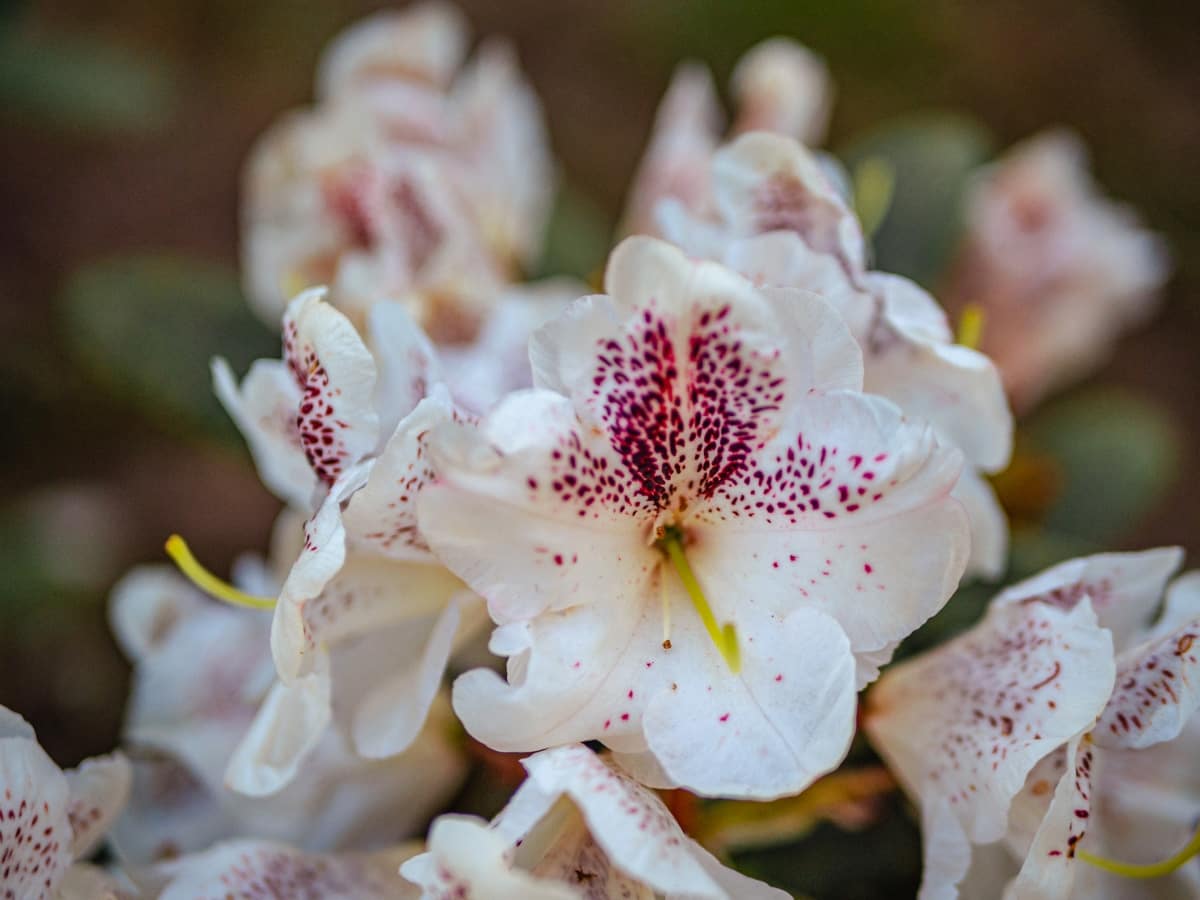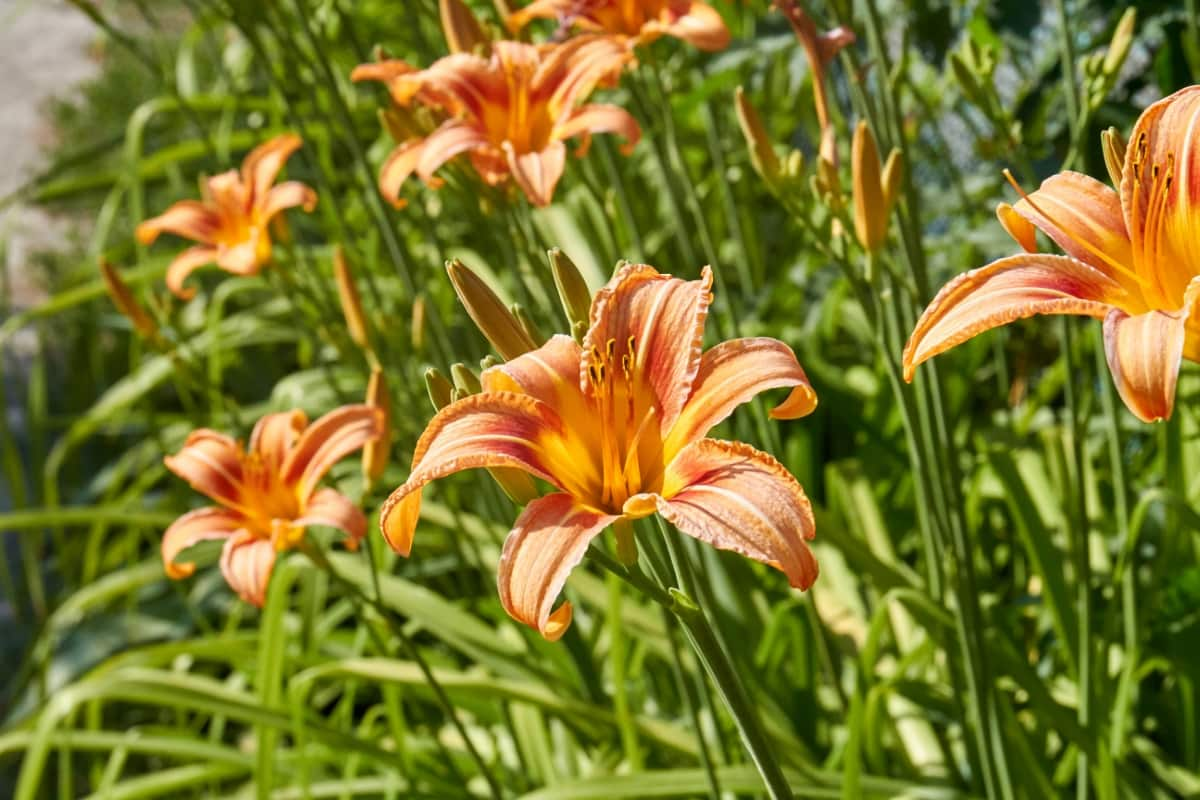Alstroemeria (Peruvian Lily) flowers come in various colors and are relatively easy to grow, making them perfect for beginner gardeners. These beautiful and delicate flowers come in various colors, such as pink, orange, yellow, red, and white. The flower has six petals that bloom from a single stem.

How to Grow and Care for Alstroemeria Flowers
Best Soil for Growing Alstroemeria Flowers
The best soil for growing Alstroemeria flowers is well-draining soil with a pH of 5.5 and 6.5. This ensures that the plant can easily absorb nutrients from the soil without being too alkaline or acidic. To ensure optimal growth of your Alstroemeria plants, it’s recommended to amend the soil with organic matter before planting. This will improve the soil texture while providing essential nutrients for healthy growth.
Sunlight Requirements for Alstroemeria Flowers
Alstroemeria flowers are known for their vibrant and long-lasting blooms. To grow these beautiful plants successfully, you must know their sunlight requirements. It’s important to understand that Alstroemeria flowers prefer a sunny location but also appreciate shade during the hottest day. They need at least 6 hours of direct sunlight daily.
Propagating Alstroemerias from Seeds or Cuttings
Seeds: You can harvest seeds from mature Alstroemeria plants in the fall and start growing them indoors over the winter. Place the seeds on moist soil and cover them with plastic wrap until they sprout. Once they have grown enough, transplant them outside.
Cuttings: To propagate Alstroemeria from cuttings, take stem cuttings in late spring or early summer. Ensure each cutting has at least two nodes (where leaves emerge), and remove any lower leaves. Dip the ends of the stems in rooting hormone powder before planting them in well-draining soil.
Watering Schedule for Alstroemeria Plants
Watering is crucial for the growth and health of Alstroemeria plants. It’s important to maintain a consistent watering schedule for Alstroemerias. Water the Alstroemeria plant deeply once a week during the growing season, which typically starts in spring and lasts until fall. This means providing enough water to reach deep into the soil where roots can absorb it.
Transplanting Alstroemerias Successfully
Alstroemeria plants can outgrow their pots quickly, so transplanting is necessary to keep them healthy and blooming. Choose an appropriate time to transplant. The best transplant time is during the dormant season when the Alstroemeria plant is not actively growing. This will give it a chance to establish itself before spring growth begins.
Next, select a container 1-2 inches larger than the current one with good drainage holes and fill it with fresh potting mix. Then carefully remove the plant from its existing pot by gently tapping on its sides or squeezing at the base of its stem. Make careful not to damage any roots while doing this. Trim off any dead or damaged roots before placing them into the new container, ensuring its crown sits just above soil level.
Pruning Tips for Healthy Alstroemeria Plants
- Pruning your Alstroemeria plants is crucial for their health and blooming. Regular pruning helps to promote growth, remove dead or damaged foliage, and prevent diseases. It will help if you remove any yellow or brown leaves as they indicate disease or stress in the plant. You can also remove any spent flowers to encourage new blooms.
- Next, it’s time for more drastic pruning if your plant is becoming too tall or leggy. Cut back the stems by about half their length to promote bushier growth.
Fertilizing Techniques for Vibrant Alstroemeria Blooms
- Fertilizing is an essential part of growing healthy and vibrant Alstroemeria plants. These flowers require nutrients to produce beautiful blooms, and fertilizers are the best source.
- When it comes to Alstroemeria plant care, choosing the right fertilizer is critical. A balanced fertilizer with equal amounts of NPK is ideal for these flowers. Experts recommend using a slow-release granular fertilizer during spring when new growth begins.
- Alstroemerias need regular feeding throughout their blooming season for continuous flower production. Be sure not to over-fertilize your plants, as this can cause excessive foliage at the expense of flowering.
In case you missed it: How to Grow and Care for Poinsettia: A Step-By-Step Comprehensive Guide

Identifying and Treating Common Alstroemeria Plant Diseases and Pests
- Alstroemeria plants are known for their resilience and ability to withstand various environmental conditions.
- One common disease that affects Alstroemeria plants is leaf spot, which is caused by fungal spores. It appears as small circular spots on the leaves and spreads quickly if left untreated. Remove infected leaves immediately to prevent this disease and avoid overhead watering.
- Another pest that threatens Alstroemeria plants is spider mites, which can cause discoloration of the leaves and stunted growth. They thrive in dry conditions, so it’s important to keep the soil moist and regularly mist the foliage with water.
- Aphids are another pest that can infest Alstroemeria flowers, causing distorted growth of buds or curling of leaves. You can control aphid populations by spraying your plant with insecticidal soap or neem oil.
- In addition to these common diseases and pests, powdery mildew, root rot, thrips, and whiteflies are potential threats to your Alstroemeria flowers. Regularly inspecting your plants will help you identify early signs of infection or infestation so you can take appropriate action promptly.
- Identifying these diseases and pests early on is crucial in preventing them from causing irreparable damage to your beautiful Alstroemerias. Taking preventive measures such as proper watering techniques and fertilization will go a long way in keeping these issues at bay while ensuring healthy, vibrant blooms all year round.
Mulching Methods for Alstroemeria Plant Care
Mulching is an essential component of Alstroemeria plant care that helps to conserve moisture, suppress weed growth, and regulate soil temperature. Applying a layer of mulch around Alstroemeria plants can provide various benefits while enhancing your garden’s aesthetic appeal. When selecting the right type of mulch for Alstroemeria flowers, organic options such as compost, leaves, or pine needles are ideal. These materials break down slowly over time, providing the Alstroemeria plants with a continuous supply of nutrients.
Winter Care for Alstroemeria Flowers
- Winter can be tough for Alstroemeria flowers, but they can survive and bloom again in the spring with proper care. The first step in caring for your Alstroemeria plants during winter is to cut back their foliage after the first hard frost.
- Once you’ve cut back the foliage, it’s time to prepare them for winter by adding a layer of mulch around their base. This will help protect the plant roots from extreme temperatures and keep them moist throughout the season.
- Another important aspect of winter care is watering – make sure not to overwater your Alstroemeria plants during this time, as excess water can freeze and damage their roots.
Tips for Growing Alstroemeria Flowers Indoors
- Growing Alstroemeria flowers indoors can be a rewarding experience for any plant enthusiast. You can enjoy vibrant blooms throughout the year with proper care and maintenance.
- Remember to provide adequate sunlight, water your Alstroemeria plants regularly, and fertilize them every few weeks to promote healthy growth.
- When growing Alstroemerias indoors, watching for pests or diseases that may affect your plants’ health is important.
- Regularly inspecting your Alstroemeria plants will help you catch issues early on so they can be treated promptly.
In case you missed it: How to Grow and Care for Armeria Flowers: A Comprehensive Guide for Beginners

Conclusion
Alstroemeria plants are grown for their large, colorful flowers. Alstroemeria flowers are best in climates with mild winters and warm summers. Growing Alstroemeria plants can be rewarding due to their ability to thrive in various conditions. You’ll get gorgeous blooms throughout the growing season with proper care and maintenance techniques like regular watering and pruning dead blooms or stems.
- Ultimate Guide to Ossabaw Island Hog: Breeding, Raising, Diet, and Care
- Ultimate Guide to Juliana Pig: Raising Facts, Size, Diet, Care, and Lifespan
- Raising Lleyn Sheep: Disadvantages, Price, Uses, Characteristics, and Care
- Ultimate Guide to Meishan Pig: Breed Facts, Breeding, Raising, and Care
- Ultimate Guide to Teacup Pigs: Raising, Diet, Lifespan, Cost, and Care
- Guide to Raising Poll Dorset Sheep: Facts, Profile, Characteristics, Uses, and Care
- Ultimate Guide to Bighorn Sheep: Characteristics, Diet, Lifespan, Breeding, and Lifecycle
- Ultimate Guide to Raising Katahdin Sheep: Farming Facts, Breed Profile, Uses, and Care
- Ultimate Guide to Raising Oreo Cows: Belted Galloways Farming Facts, Profile, Uses, and Care